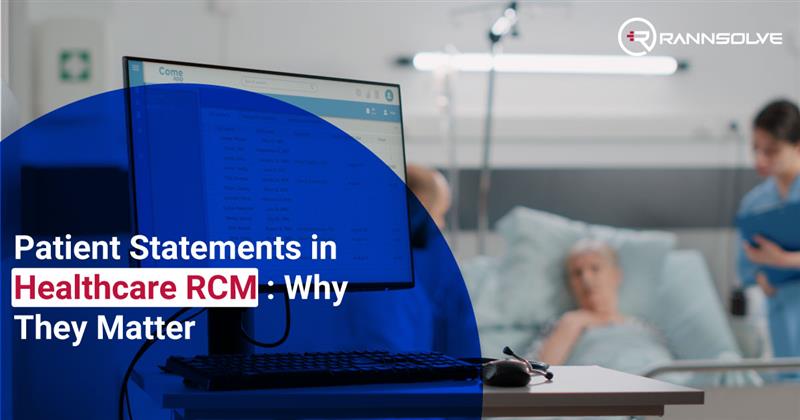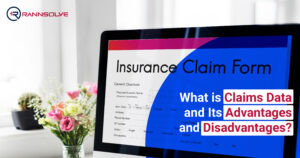Patient statements in healthcare are one of the few direct lines of communication between a healthcare provider and a patient when it comes to finances. And with revenue cycle management (RCM), they’re not something you can afford to overlook.
When handled well, these statements help patients understand their financial responsibilities and make payments on time. Otherwise, they lead to confusion, late payments, and increased administrative backend work.
Understanding Patient Statements in Healthcare
Simply put, a patient statement is a bill, but it’s also a document that details the medical services a patient received, what the insurance covered, and what the patient still owes. This document is usually generated after the insurance company processes the claim. It reflects any adjustments or write-offs and includes the final balance the patient needs to pay.
A typical patient statement includes the patient’s name, account number, date of service, description of services, charges, insurance payments, and the outstanding balance. It may also include options for the mode of payment and contact information in case there are questions or disputes.
Some providers still send paper statements by mail. Others offer electronic versions through patient portals or email. Either way, it’s a tool meant to bridge the gap between receiving care and settling the bill.
Why Patient Statements Are Vital to Revenue Cycle Management?
Patient statements fall at the later stage of the revenue cycle, but they can have a big influence on its success.
A good patient statement does three things:
- It tells patients what they owe, in plain language, after insurance has done its part.
- It encourages timely payments by making the amount and payment process clear.
- It reduces the chances of bad debt by minimizing confusion and helping patients resolve issues before their balances head to collections.
Patient statements have evolved. Many providers now send electronic statements or allow text/email reminders. Some even offer interactive statements that patients can click through or pay for directly. These upgrades make the process faster, easier, and more user-friendly.
The Role Patient Statements Play in Healthcare Beyond Billing
Transparency and Patient Understanding
Healthcare billing can be murky. A clear patient statement helps patients make sense of what they’re being charged for and why. When patients understand their bills, they’re more likely to pay sooner and less likely to call your office angry or confused.
Payment Clarity
It sounds obvious, but many providers still send out vague or poorly formatted statements. Clarity cuts down on hesitation and increases the chance of getting paid faster. The point isn’t just to say “hey, here’s your bill”, rather it’s to make it as easy as possible for the patient to understand the bill and pay it.
Legal and Compliance Aspects
Patient statements also serve as a record of communication. They help providers stay compliant with billing regulations and give patients a paper trail if they need to challenge a bill or negotiate a payment plan.
Patient Engagement and Satisfaction
It’s easy to forget that billing is part of the patient experience. Clear, well-structured statements help patients feel informed and in control. And a good billing experience can improve how they feel about your organization overall.
Supporting Financial Planning
For patients juggling large or unexpected medical bills, knowing what they owe and what options they have is very important. Statements that include info about payment plans or financial aid make it easier for them to plan, and make it more likely that they’ll follow through.
Challenges With Patient Statements
Even with all their benefits, patient statements can also bring some challenges for patients and billing teams alike.
- Confusing Language: Medical billing codes and insurance adjustments aren’t intuitive. Without clear explanations, patients often don’t understand what they’re looking at.
- Inaccurate Billing: A typo or a coding error can turn into a major issue. Incorrect balances can damage trust and slow down the entire billing process.
- Delivery Delays: If statements take too long to reach patients, the chance of timely payment drops.
- Complexity: Healthcare billing is inherently complex, and if that complexity shows up in the statement, patients may feel overwhelmed.
- Disputes and Errors: Even small discrepancies can turn into bigger problems. They take time to fix and often require back-and-forth that could’ve been avoided with better clarity up front.
These challenges are why so many practices struggle with getting paid on time and why improving statements should be a priority. Which is why most healthcare facilities outsource patient statement and communication management to a 3rd party healthcare RCM service provider! Good vendors also keep up with regulations and trends, meaning your statements are more likely to be accurate, timely, and compliant.
Legal and Regulatory Requirements Checklist
HIPAA Requirements
• Secure transmission and storage of patient data
• Limited disclosure of protected health information
• Proper authorization for billing communications
Our Communication Channels
• Dedicated Billing Line with trained staff available to resolve queries 24/7
• SMS & Email Support for secure communication
Multiple Convenient Payment Options
• Online Payments through secure patient portals with 24/7 access
• Flexible Payment Methods
• Interest-Free Payment Plans with automatic scheduling and easy modification options
Payment convenience directly correlates with collection success. The easier you make it for patients to pay, the faster you receive payments and improve cash flow.
Outsource Patient Statements and Communication Management to Rannsolve
With 25+ years of industry expertise and servicing healthcare facilities, we combine deep knowledge with smart automation to optimize your cash flow, reduce errors, and improve your revenue. Rannsolve’s patient statement and RCM management professionals take utmost care of everything from walking your patients through insurance verification and medical billing to getting you paid. Talk to us now!





